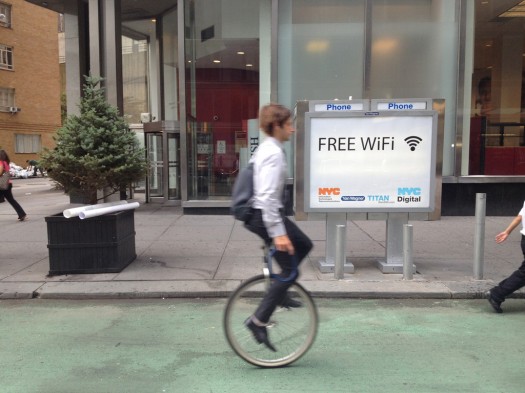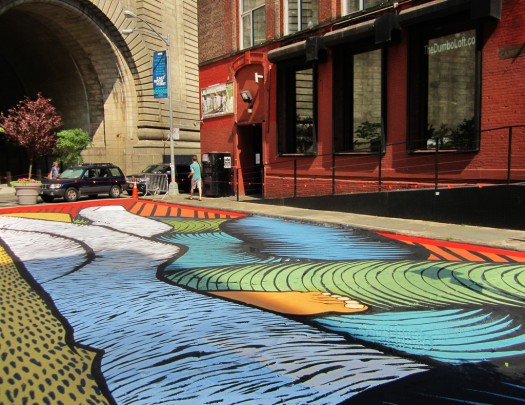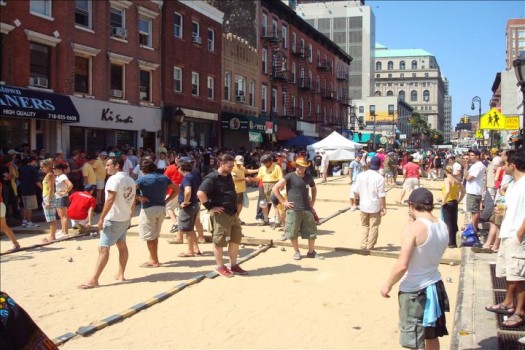
We are celebrating 15 years — and counting — of stories that are deeply researched and deeply felt, that build a historical record of what the city has been.
We are celebrating 15 years — and counting — of stories that are deeply researched and deeply felt, that build a historical record of what the city has been.
PUBLIC-PRIVATE LEGACY
NYC Parks Commissioner Adrian Benepe is planning to leave the post he has held for a decade for a position at the national non-profit the Trust for Public Land. Benepe has crafted a legacy during his tenure that has been called the “most ambitious program of building and refurbishment New York City’s parks since the era of Robert Moses.” Benepe’s innovative funding structures, which often rely on public-private partnerships, have earned him both praise and criticism. In addition to securing $4.5 billion from the city for use on municipal recreational spaces, Benepe has been known to seek corporate sponsors that can assist with skyrocketing operational and maintenance costs. Many other organizations in the city have found success with this approach, including the Central Park Conservancy (85% of whose budget is privately sourced), the Prospect Park Alliance and Friends of the High Line. On the other hand, some citizens express distaste at the encroachment of corporate interests on public goods, as well as the concern that, over time, “cities may get lazy about funding if philanthropy is footing the bill.”

Image via NYC DoITT
HOT-BOOTHS
This week the city began converting the more than 12,000 remaining pay phones that dot the sidewalks into Wi-Fi hotspots. Each hotspot will extend a few hundred feet beyond its booth, and will offer free, unlimited bandwidth and usage. The pilot program starts with just 10 public phone booths in three boroughs — Manhattan, Brooklyn and Queens — but there are plans in place to expand the free Wi-Fi coverage to other areas in the city, joining other public hotspots in various New York Public Library branches and several dozen parks. Good news for both the nostalgic and anyone whose cell battery has died, the pay phones also will remain active as old-fashioned telephones. For a list of active locations, check out this map from NYC on foursquare.
FAST TRACK BACK
Amtrak has unveiled an updated plan for what is now estimated to be $151 billion in investments to improve existing rail infrastructure and capacity, with a long-term goal of high-speed rail in the Northeast Corridor by 2040. The plan is a major drawdown from the 2010 version, and “scales back the total cost, drops planned stations, and devotes much more attention to realistic, phased implementation.” The so-called “iterative” and “phased” implementation is stressed as a “stair-step” strategy, one that the company expects will yield visible results long before the decades-away end date. A significant change in this version of the plan is the addition of the Gateway Tunnel, which replaces the proposed ARC Tunnel plan that was shot down by New Jersey Governor Chris Christie in 2010. The Gateway program will add two tunnels under the Hudson River and four tracks between Newark and the expanded Moynihan/Penn Station, promising to relieve train congestion and increase train speeds, though the plan eliminates proposed new stations on the east side of Manhattan and at the White Plains Airport, ultimately reducing overall service to New York City when compared to the 2010 plan. Amtrak plans to release a more detailed plan by 2015.
THE BRONX IS THE NEW PITTSBURGH
This week in The New York Times, Adam Davidson (of NPR’s Planet Money) looks at why the Bronx has lagged behind the other boroughs of New York City in economic growth, while keeping stubbornly high rates of unemployment and crime. The takeaway is that the Bronx never developed its own economic drivers and its housing stock is “less-gentrifiable” than that of Brooklyn and Queens, whose collections of independent towns “rooted in Long Island agriculture” were perfectly poised to support the influx of Manhattanite yuppies starting in the 1990s. Though the borough’s diversity and inexpensive real estate could be a significant draw to entrepreneurs, Davidson also points out that many successful Bronx businesses are actually earning and spending their money in other parts of the city, and that self-sustained Bronx economic initiatives and triumphs are few and far between. Bruce Katz, director of the Metropolitan Policy Program at the Brookings Institution, suggests that the Bronx should look outside the five boroughs to places like Pittsburgh, a city that redefined itself as an incubator for research and academia after the steel industry’s collapse, to capitalize on its existing strengths in the “eds and meds” sector, with strong concentrations of higher education and medical facilities that are among the borough’s biggest employers.

Pearl Street Triangle Painting | Courtesy of NYCDOT
ART-ERVENTIONS
Since 2008, the DOT’s Urban Art Program has pursued its mission to “transform the landscape from ordinary to extraordinary with temporary, unexpected interventions” through collaborations with artists and designers of various kinds. The program has produced over 85 installations across the five boroughs, ten of which have popped up since January of this year. The two most recent “Arterventions” in the city include Giant Pod, a 10-foot-high, hollow metal sculpture by Pedro Villalta and Montserrat Daubón, located at 124th Street and Lenox Avenue; and the Pearl Street Triangle Painting in DUMBO, a motion painting by artist David Ellis. The next round of the programs semi-annual call for “pARTners” is now available, which invites collaborations of community-based organizations and artists, and the deadline for design competition for the Triangle Shirtwaist Factory Fire Memorial is coming up soon. More information on the Urban Art Program can be found on the DOT’s Flickr page and website.
COMMUNITY E-BOARDS
While a recent explosion of online crowdsourcing platforms have promised new ways for citizens to engage with city and neighborhood planning projects, most of them skip over, rather than connect to, the most traditional way of connecting the public to its local government: the community board. To change that, OpenPlans worked with fifteen community boards citywide to create CB Tools, a new online resource that highlights “best practices and new tools Boards can use for public participation” and “maximize[s] citizen engagement by improving Boards’ visibility, engagement, outreach, data collection and more.” The site aims to educate citizens about community boards, who they are and what they do, and to connect Community Boards to one another, to trade ideas for how to tackle shared challenges and needs. Check out CB Tools here.
EVENTS AND TO DOs
WHAT MAKES WENDY WORK?
“Wendy,” the bright blue, caged, spiky Koosh ball that won the hearts and minds of this year’s MoMA PS1 Young Architects jury, has garnered significant attention for its ability to neutralize pollutants in the air around it through its “titanium nanoparticle-infused” coating. This Sunday, July 15, from 2-4pm, PS1 will host a panel discussion moderated by the architects of Wendy, Matthias Hollwich and Marc Kushner, dedicated to answering questions about “how Wendy does what she does” and asking why more architects and designers aren’t implementing this technology in their work. More information on Architizer.
PARTY LIKE IT’S 1789
For the tenth year running, this Sunday, July 15th, Smith Street between Bergen and Pacific in Brooklyn will be spread with 12 cubic yards of sand and divided into pétanque courts to make way for the biggest Bastille Day fête in the US. Although taking place one day after the historical anniversary of the storming of the Bastille, there will nonetheless be plenty of French music, food and pastis will be on hand for the festivities, along with two live bands. The events begin at 11 am and continue until 8 pm or later. In Manhattan, the annual Bastille Day on 60th Street festival will bring music, food, activities and entertainment to the Upper East Side on Sunday. And on Saturday the folks from The Skint will be hosting their second annual Bastille Day Bash at Dekalb Market, complete with can-can dancers and a baguette-eating contest. Vive la France!
FOLLY
Don’t forget to head to Long Island City tomorrow for the opening picnic to unveil the winner of Folly, a competition held by the League and Socrates Sculpture Park. More information here.

Image via Streetsblog
The Roundup keeps you up to date with topics we’ve featured and other things we think are worth knowing about.
The views expressed here are those of the authors only and do not reflect the position of The Architectural League of New York.